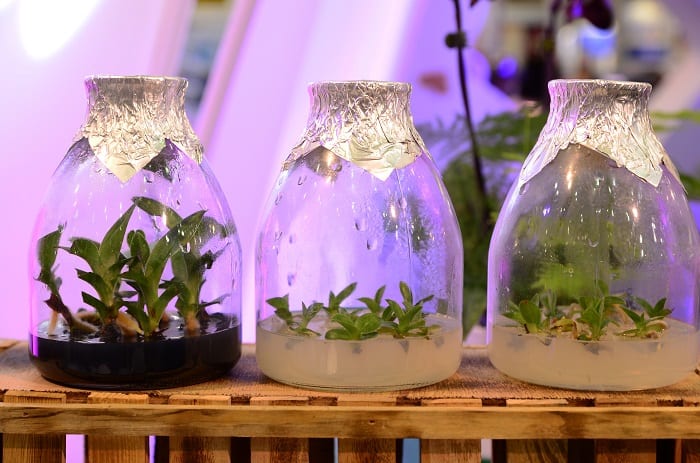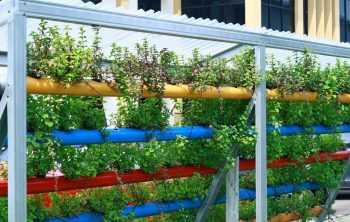So you might have heard that it is possible to clone a plant with water and wondered how they do it. Plant cloning is a lot different from the type of cloning you may be thinking. Before I knew what the term meant, I used to think plant cloning involved trying to create a new plant from an old one, and that it would need to be carried out in the laboratory with men in white coats, mixing different compounds and staring into a microscope. But while I wasn’t entirely wrong, it was nothing like the Frankenstein movie I imagined it to be. So then what is plant cloning, and how can you clone a plant?
What is Plant Cloning?
Plant cloning is a process that is used to replicate specific characteristics that a mother plant possesses in her offspring. The features needed to replicate could include height, adaptability, flowers, leaves, and color.
It is easy to clone a plant, and anyone can do it once they learn how to. While it may seem like the process requires a lot, all that you need is to take a clipping or cutting from a plant and place it in a glass of water. Keep the glass of water by the window and then give it a few days until you notice changes in the root of the new plant. To be able to carry out the cloning successfully, you will need just the right materials, which we will be talking about in the next section.
How to Successfully Clone a Plant with Water
There are many reasons why gardeners clone a plant. For some, it is to be able to quickly and efficiently create a new plant; for others, it is to replicate the genes and traits of an existing plant into a new plant. The entire process might sound like something technical that requires the expertise of biologists of other scientists, but that is not true. With the right materials and method of planting, you should be able to get the job done right and without difficulty.
You Need the Right Materials
Just as you cannot catch a fish without fishing gear, it will be impossible to clone a plant on its own without the right set of tools.
Some of the essential tools to get the job done include:
- A container
You would need a plastic container to hold the growing medium for your new species. The type of container to use will depend on the kind of plant you are looking to clone. For large plants, you will require a large bowl or drum while a pail will be just right for an indoor plant.
While it is common to find gardeners cloning plants in pots, we recommend using a transparent plastic so you can follow up on the root development.
- Rockwool or
Soil
You also need a propagation medium for the new plant to grow in. Ideally, you may decide to settle for potting
- Root Hormones
You may also need to use root hormones as part of the cloning process. They contain synthetic auxins which help the plant to grow. Their function is to influence root development and kickstart the cloning process. It is essential to note that if you are big on organic gardening, using root hormones may not be a good idea since it contains toxins that can be harmful to you. Natural alternatives such as cinnamon, willow tea, and apple cider vinegar are a safer option than synthetic auxins. You may also consider cloning tomatoes since they quickly produce natural auxins than many other plants.
Begin the Cloning Process
Once you have all your materials sorted out, the next step is to begin the planting process, which you can do in less than 10 minutes. All you need to do is to;
- Fill your container with
soil or Rockwool.
You will need to drill a hole at the bottom of the container if you decide to use
- Water the
soil
Once you have sorted out the above, you will then have to water the

- Cut the Stem and plant
You will then need to make a diagonal cutting of any lateral stem you intend to clone. We suggest lateral stems instead of a diagonal one since they shoot directly from the roots. Once you have this, you will need to dip the end in your root hormone if you are using one. Once you have the bottom in the rooting hormone, the next step will be to immerse it in the hole we created in the container earlier when we filled it with
After you have successfully cloned your plant, you will need to transfer your pot or medium that houses the new clone to a warm area away from direct sunlight. You will also have to keep the
So now you know how it is to clone a plant with water, we hope you will give it a try and experiment with your garden plants if you haven’t tried it before. Feel free to ask any questions in the comment section. We love to hear from you.

Josephine is an enthusiastic gardener who loves to spend her spare time tending to her garden. She is passionate about growing her own food, and aspires to one day have her own vegetable garden. Josephine is also an animal lover and often takes in stray cats and dogs. She enjoys spending time with her pets in the garden, and is often seen playing with them or watering her plants. Josephine is an avid reader and enjoys learning about new gardening techniques and plants. She is always looking for ways to improve her garden and make it more beautiful. She is a great friend, always willing to lend a helping hand when needed. Josephine‘s passion for gardening and love of animals make her a wonderful addition to any garden.




